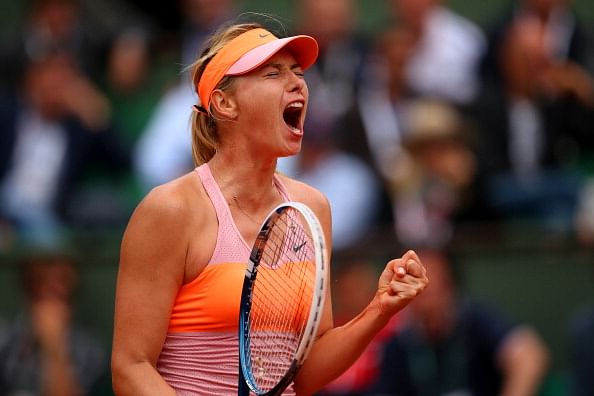
Maria Sharapova at the 2014 French Open: The tenacious fighter makes her customary late-round appearance

It was nearly a decade ago that a 17-year-old Maria Sharapova captivated the world by defeating Serena Williams to win Wimbledon. Her power baseline game may have been one-dimensional, but that didn’t stop it from being incredibly effective. Moreover, her intense competitive focus and determined poise became immediate talking points across the sport’s community, making her an overnight superstar.
Four majors and countless other titles later, the Russian still continues to draw in the crowds and the bouquets as she did all those years ago. But now, the fans and analysers of Sharapova’s game can attest to there being deeper nuances in her play which give her a certain leverage over her rivals. And this leverage has not only equipped her to improve upon her game-plan set-by-set and match-by-match, but has also enabled her to execute her plans against tricky opponents who would have, in the past, whittled her defenses eventually.
This year’s French Open has proven to be an extremely unpredictable event, with startling upsets dotting the first week. But Sharapova’s astoundingly improved claycourt skills have enabled her to withstand the bloodbath, in the process multiplying her chances to win the title. She has not been perfect – as you expect a de facto favourite to be – but Sharapova has survived, and that may well be more valuable than perfection.
She has been under the pump on numerous occasions this tournament, starting with her opening match against Tsvetana Pironkova, in which she went on to win the match in straight sets despite being broken quite early in the first set. Then there was her fourth round match against Sam Stosur in which she had to battle through three tough sets to get through to the quarterfinals. And finally, there was her see-saw quarterfinal against Garbiñe Muguruza, in which she barely survived being upset by the 20-year-old’s big hitting.
After all these years that the world has seen – and gotten to know – Sharapova, the idea of her game ever being absolutely perfect has been cast to the shadows. Though shades of her precision stroke-making keep re-appearing at intermittent intervals, her inability to sustain a high level consistently, over a long period of time, has come to define the Russian. But it’s been her ability to gain purchase, or for a better word – leverage – over the situation and her opponent, and her resourcefulness to dig deep into her reserves and eke out wins from the brink of upsets, that have made her a thoroughly inspiring figure in these past years, in spite of her inconsistencies.
And on the occasional moments when she’s flawless, it’s quite amusing to watch her undermine her own performances to the point of coming up with statements that invariably become quotable quotes. Especially on clay, with her famous ‘cow on ice’ line all those years ago. These self-deprecating remarks may come across as an attention-grabbing gimmick but are, in actuality, her way of keeping herself grounded at all times.
Sharapova’s comments aren’t uttered by her for the sake of saying them; instead, they present a deeper introspection about herself without any subterfuges. Most sportspersons strive to attain a certain level-headedness about their game and often fail, giving in to excuses to eventually smoothen their way out. Sharapova’s matter-of-fact, no-nonsensical approach is a refreshing change, unchanged by the passing time and, in fact, even more pronounced now thanks to countless experience-fuelled lessons learnt.
Unlike many athletes who move towards the prime of their careers over a progression of years, in the Russian’s case, injuries have constantly halted her ascension to her deserved peak. But while her career can be divided into pre-injury and post-injury eras, her resilience in the latter part of her career has shaped her identity more emphatically than her successes in her initial years. Not that she was less of a player than she is now, but the nuances seen in her game these days indicate how seriously she takes each and every point, irrespective of whether she’s playing at her optimum or not.
Today, Sharapova has matured from being a cow on ice to the most consistent claycourter on the women’s tour. That’s not something that can be achieved with an elitist attitude, or a mindset that makes you second-guess yourself.
The picture of equanimity and intensity that she projects into a match is something that her opponents – with the notable exception of Serena Williams – haven’t been able to handle all that well, which allows her to retain an upper hand in the proceedings and even regain the momentum in case of lapses.
In the penultimate stages at Roland Garros, this calmness is the most powerful arsenal in Sharapova’s armour. Her serve may let her down and her forehand and backhand may send the ball flying out of the sidelines. But no matter how precariously she’s balanced on the dangerous side of the upset ledge, Sharapova’s tenacity to outlast, outthink and mentally outclass her opponents make her the favourite to make it to the third Sunday.